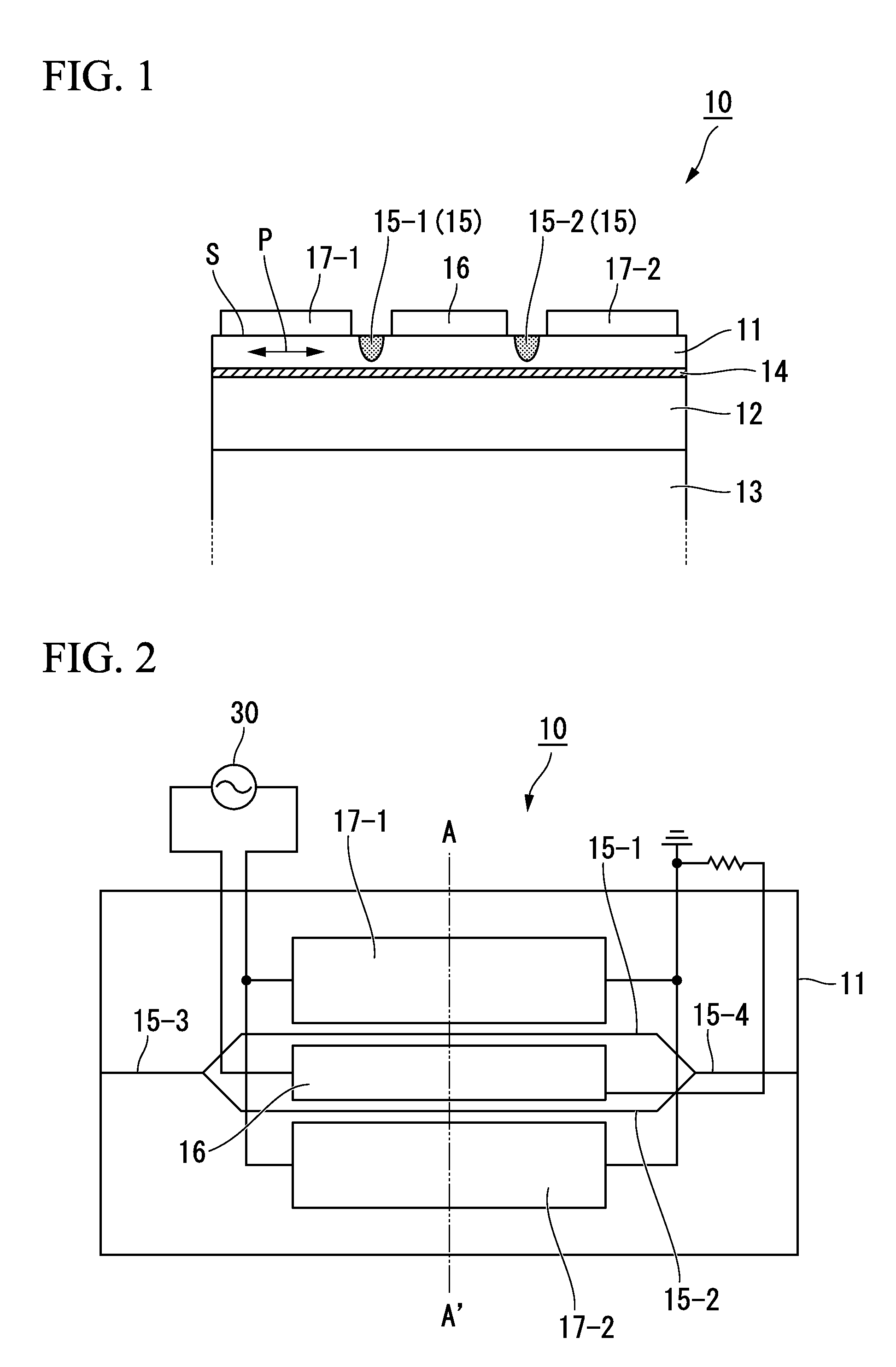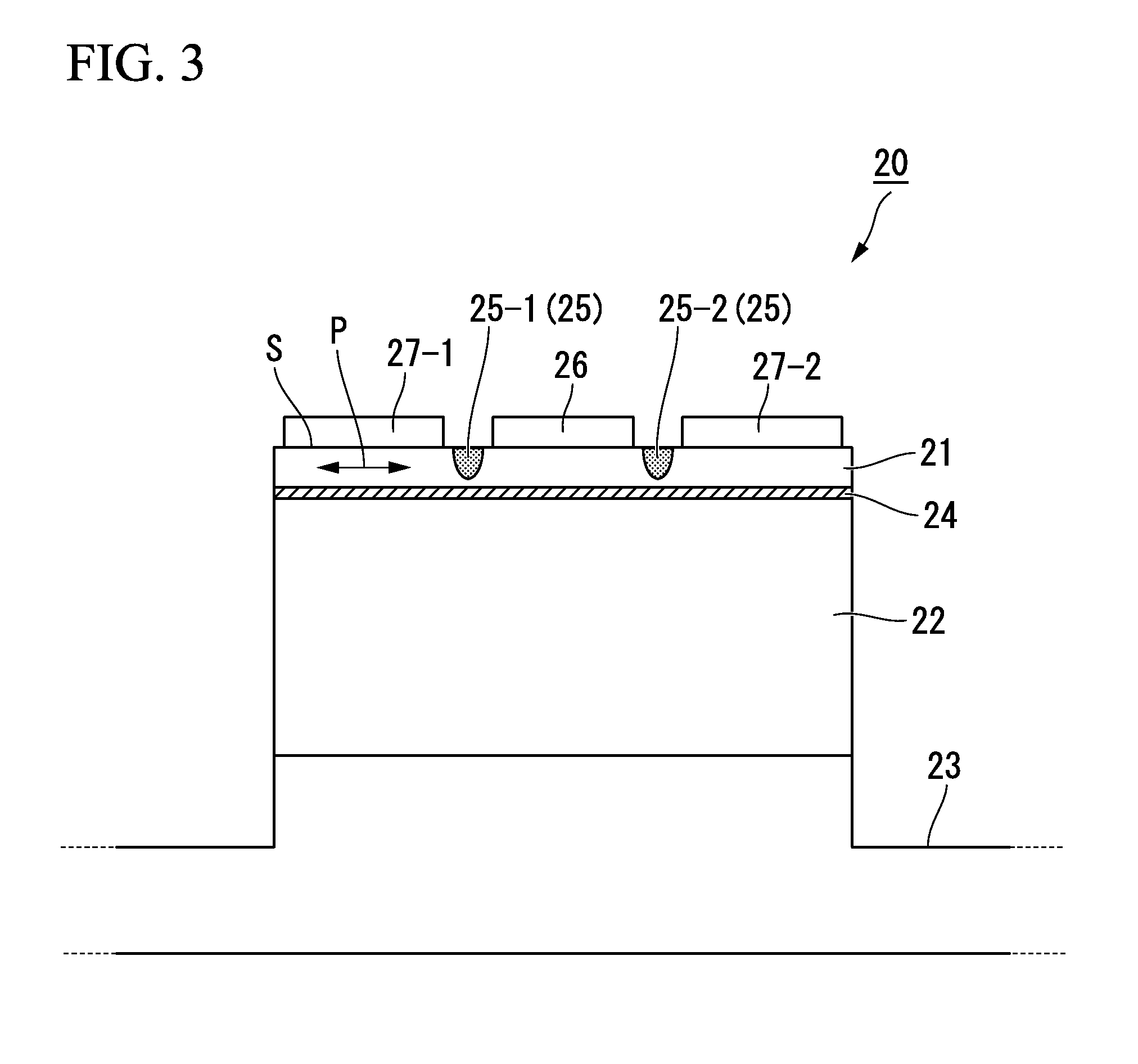Optical waveguide device
a waveguide and optical waveguide technology, applied in the direction of optical waveguide light guides, instruments, optics, etc., can solve the problems of increasing stress, reducing the bonding strength of the bonding, and not realizing the voltage reduction of the drive voltag
- Summary
- Abstract
- Description
- Claims
- Application Information
AI Technical Summary
Benefits of technology
Problems solved by technology
Method used
Image
Examples
first embodiment
[0024]FIGS. 1 and 2 show a cross-sectional configuration view and a planar configuration view of a traveling-wave type optical modulator 10 that is an optical waveguide device according to a first embodiment of the invention, respectively. The cross-sectional configuration view of FIG. 1 illustrates a shape that is cut along a line A-A′ of the planar configuration view of FIG. 2.
[0025]In FIGS. 1 and 2, an optical modulator 10 includes an optical waveguide substrate 11 in which a Mach-Zehnder optical waveguide 15 is formed, a holding substrate 13 that holds the optical waveguide substrate 11, a liquid crystal polymer substrate 12 that is interposed between the optical waveguide substrate 11 and the holding substrate 13, an adhesive layer 14 that bonds and fixes the optical waveguide substrate 11 and the liquid crystal polymer substrate 12 to each other, and a signal electrode 16 and ground electrodes 17-1 and 17-2 that are formed on the optical waveguide substrate 11.
[0026]The optica...
second embodiment
[0042]FIGS. 3 and 4 show a cross-sectional configuration view and a planar configuration view of a travelling-wave type optical modulator 20 that is an optical waveguide device according to a second embodiment of the invention, respectively. The cross-sectional configuration view of FIG. 3 illustrates a shape that is cut along a line A-A′ of the planar configuration view of FIG. 4.
[0043]In FIGS. 3 and 4, the optical modulator 20 includes an optical waveguide substrate 21 in which a Mach-Zehnder optical waveguide 25 is formed, a liquid crystal polymer substrate 22 that is a holding substrate that holds the optical waveguide substrate 21, an adhesive layer 24 that bonds and fixes the optical waveguide substrate 21 and the liquid crystal polymer substrate 22 to each other, a signal electrode 26 and ground electrodes 27-1 and 27-2 which are formed on the optical waveguide substrate 21, and a package housing 23 which fixes the liquid crystal polymer substrate 22.
[0044]The optical wavegui...
PUM
 Login to View More
Login to View More Abstract
Description
Claims
Application Information
 Login to View More
Login to View More - R&D
- Intellectual Property
- Life Sciences
- Materials
- Tech Scout
- Unparalleled Data Quality
- Higher Quality Content
- 60% Fewer Hallucinations
Browse by: Latest US Patents, China's latest patents, Technical Efficacy Thesaurus, Application Domain, Technology Topic, Popular Technical Reports.
© 2025 PatSnap. All rights reserved.Legal|Privacy policy|Modern Slavery Act Transparency Statement|Sitemap|About US| Contact US: help@patsnap.com



